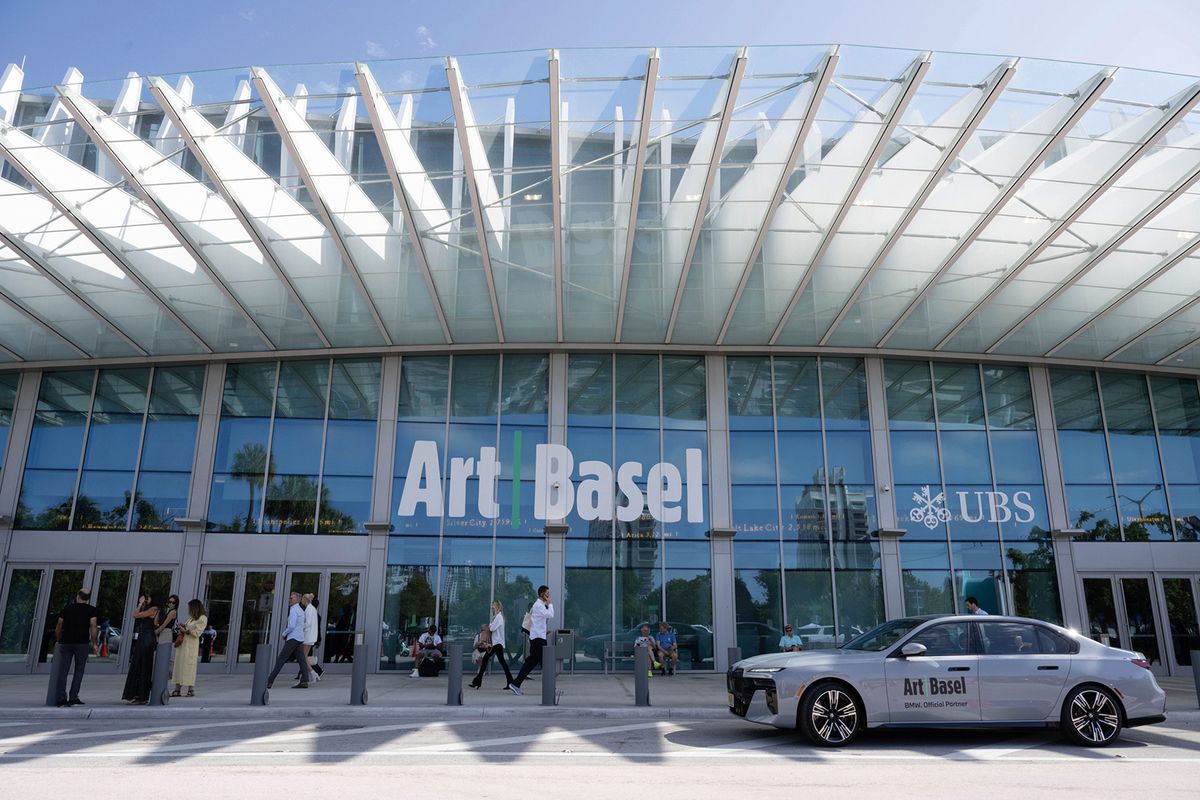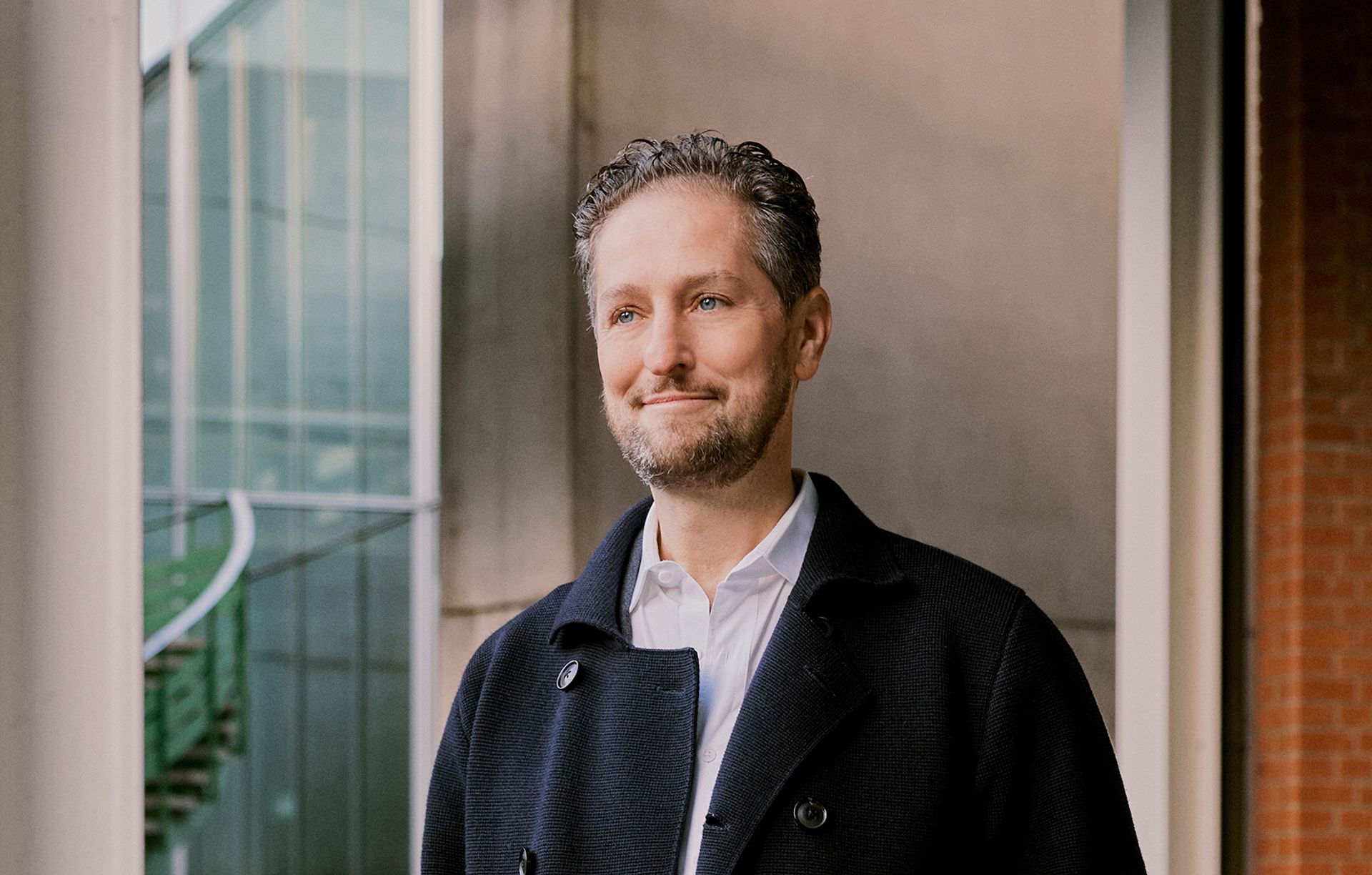Art Basel Miami Beach shrugs off the digital downturn, its main rival’s US expansion and culture war worries

Exhibitor numbers may be down 2% on last year, but the forthcoming edition of Art Basel Miami Beach still tallies a whopping 277 galleries and will feature works by more than 4,000 artists. Those numbers are easily enough for the art fair to retain its status as the largest in the Americas.
Among the new features this year is an updated fair layout structured around five plazas, which organisers say will provide “improved visitor flow and seating, eating and drinking rest points”. Among the first-time exhibitors are a dozen influential New York galleries, including Ortuzar Projects, Lyles and King, 56 Henry and Lomex. Also joining the south Florida fray for the first time are the closely watched Los Angeles galleries Stars, Château Shatto and Luis De Jesus—along with several international entrants, including the São Paulo-based Galatea, Warsaw-based Galeria Dawid Radziszewski and Gypsum Gallery from Cairo.

Another fresh face in the Sunshine State is the world’s third richest person, Jeff Bezos, who announced in October that he will move from Seattle to Miami. His imminent relocation follows that of the billionaire collector Kenneth C. Griffin’s hedge fund, Citadel, which moved to town last year. These newly relocated industry titans crest a wave of wealthy individuals who are chasing Florida’s low tax rates—the state levies no taxes on capital gains, inheritance or estates—and could potentially purchase lots of art.
Waves of wealth
“Miami has seen several waves of new collectors come in since Covid,” says Noah Horowitz, the chief executive of Art Basel, and former director of the Miami Beach fair from 2015 to 2021. Alongside the aforementioned US billionaires are a spate of rich Latin Americans, from countries such as Venezuela and Colombia that have seen recent leftward political turns, who are “shifting from spending time in Miami to making it their permanent home—although this trend didn’t start yesterday”, he adds. The arrival in town of these mega-rich individuals coincides with newly established spaces such as restaurateur John Marquez’s Marquez Arts Projects, which opened earlier this year.
A previous Miami wave was made up of tech entrepreneurs who flocked to the city during the crypto boom, when NFT art catapulted onto the scene. In 2021, Art Basel Miami Beach made a concerted effort to capitalise on this with a number of digital art offerings. Then the crypto winter came—venture capital funding for tech startups in Miami in the first quarter of 2023 nosedived by 92% year on year, according to Bloomberg, and the latest Art Basel/UBS Survey of Global Collecting reports that, from 2022 to 2023, the percentage of digital art in the collections of top-tier collectors fell by almost half, from 15% to 8%.
But Horowitz says that much of this newly relocated tech-based wealth is “sticking around” and, even though there will be “less digital art” at the fair, Art Basel is continuing to make inroads with the communities that are most inclined to buy it. Case in point, this year the cryptocurrency platform Coinbase Exchange will partner with the fair. Horowitz, however, declines to give further details for now, or to confirm whether this venture was struck through Craig Hepburn, Art Basel’s newly appointed chief digital officer.
Hepburn is not the only key new member of the Art Basel team. From 2024, the Miami show will be led by Bridget Finn, who was announced as director in September. Finn was previously a partner at the Detroit gallery Reyes Finn, meaning that she has “great insight into being an exhibitor at Art Basel, and understands what they want”, Horowitz says. It’s a remark that aligns with what he says is Art Basel’s top priority: “Knowing what our clients care about, and how to drive value to them.”
Frieze gets bigger
Art Basel’s strategy will be tested by recent moves from its main competition. Earlier this year, Endeavor, which owns the rival art fair brand Frieze, acquired two leading regional US fairs, the Armory Show in New York and Expo Chicago. “It is not Art Basel’s policy to comment on its competitors,” Horowitz says, but adds: “We remain unequivocally convinced that Art Basel Miami Beach is the leading show and leading platform for modern and contemporary art in the US market. So we’re going to do everything we have to do to ensure that remains the case.”
If the wider art fair landscape doesn’t provide turbulence, then Florida’s internal politics just might. A culture war being waged by Ron DeSantis, the state’s governor and candidate for the Republican nomination for president, is deepening already entrenched divisions in the state.
So will local politics have an impact on the fair? Horowitz says: “It just underlines the urgency and importance of Art Basel Miami Beach, and the whole art week, to be a cultural event that really welcomes communities across the spectrum. Fostering a culture of open debate and conversation around these issues and providing a platform for marginalised communities are all extraordinarily important—always. And arguably even more so in light of the broader political backdrop that is unfolding, not just in Florida, but in the US.”
• Art Basel Miami Beach, Miami Beach Convention Centre, 8-10 December
– Kabir Jhala, Published Courtesy of The Art Newspaper


Leave a Reply